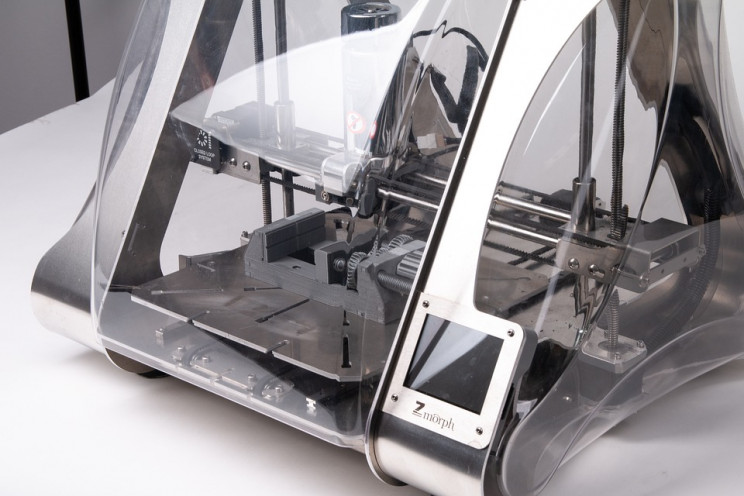Screenprinting is one of the most popular and established methods for printing t-shirts, especially in large quantities, and gets its name from the use of screens to apply ink onto the shirt’s fabric. Sometimes also referred to as silkscreen printing, this method has become popular due to its versatility and ability to create shirts up to a very high quality that won’t lose their vibrant colors over time.
What’s the screenprinting process?
Step 1: Have a design ready.
When approaching any print job, the first thing you need to prepare is the artwork that will be printed. There are several software options available to you, including the popular Adobe Suite such as Photoshop and XD, but there are also cheaper or even free options that can work well. Depending on your design experience, you may be confident in doing this yourself, or you may want to hire a professional graphic designer to work with you on the project. One of the most important things is to ensure that the design is exported in the correct format.
Step 2: Exporting and formatting your file
There are two main formats when designing through software – vector-based and pixel-based. Pixel-formatted design files are made up of a specific number of pixels, and if you zoom in on the file, you’ll be able to see how the design is made up. When this type of file increases in size, the number of pixels doesn’t increase, meaning that you’ll end up with a blurry and distorted look as the size increases. Vector-based formats use mathematical calculations to create the file, and as you increase the size of the file, the quality is maintained, making it ideal for printing designs onto a t-shirt. The format that XD uses is a .eps file, which is vector-based and a good option. You must also make sure that each color in the file is saved on a different layer, as when screenprinting, each color is printed using a specific screen. If you’re working with a company like Thrive wholesale screenprinting, they will provide specifications on the design file you need to provide and review it to ensure that you get the final print you want.
Step 3: Add emulsion to the screen.
With your design ready, the printing process can begin. Screenprinting requires a photo-sensitive emulsion, which is then applied to the screen. If you’ve seen a green background when someone is screenprinting, this is what creates it.
Step 4: Allow the emulsion to dry.
To allow the emulsion to work correctly, you must leave it to dry, ideally in a cold darkroom. The emulsion reacts to light, so you must ensure that it’s completely dry before it’s exposed to light, or the print may not work correctly.
Step 5: Create your stencil.
When the emulsion has dried, the design can be attached to the screen using a mild adhesive and is placed under a strong UV light. The light will react with the emulsion, causing the parts that are covered to harden while the remaining emulsion will remain soft, creating a stencil of your design. The stencil should dry for around an hour and is then removed using a brush and water, leaving a negative of the artwork on the screen, ready to print.
Step 6: Separate your colors.
As mentioned above, the screenprinting method takes each color of a design. It applies it to the material individually, so you need to split each color of the design up into different layers. If your design has three colors, you’ll need to prepare three screens to complete the design.
Step 7: Print your design.
With everything prepared, the printing process can begin. The t-shirt is placed into the screenprinting machine with the screen placed over it. The ink is then placed on top of the screen and pressed using a squeegee to ensure it’s evenly distributed. Each layer of color is done in this manner until all layers have been added.
Step 8: Curing the ink
After the printing process has been completed, it will need to be cured and sealed to ensure the ink stays in place. Without doing this, the ink will fade over time. The ink is brought up to a specific temperature, sealing it in the fabric and creating a bond that will last for many months and years.
What are the advantages and disadvantages of screenprinting?
Advantages of screenprinting
- You can print higher-quality prints compared to other methods, as the ink is generally thicker than what’s used in different techniques.
- While screenprinting has some setup time, it’s the fastest and most efficient method for printing once prepared, especially when done in bulk. New screenprinting machines can print over 4000 t-shirts per hour. Screenprinting is by far the best technique for printing large batches of t-shirts.
- Screenprinting is also highly versatile and allows you to add and mix as many colors as you’d like to create any design you create. Some screenprinting machines will also enable you to cover a whole t-shirt, meaning that your designs aren’t limited to just the back or front.
- Due to the thick ink that’s used, t-shirts created with screenprinting last for a very long time with no fading.
- Custom inks allow you to create unique finishes and textures that aren’t available using other methods.
Disadvantages of screenprinting
- The setup required to print 1000 t-shirts is the same as when printing one, meaning that if you need minimal numbers of your t-shirt, it’s relatively inefficient. The setup cost doesn’t change from large to small runs, bringing up the short-run total cost significantly. For these reasons, it’s generally not recommended to use screenprinting for small-batch prints.
- Screenprinting doesn’t work well for photo-realistic images.
- As each color is applied individually, it’s also not the best technique for designs with many colors or intricate designs.

